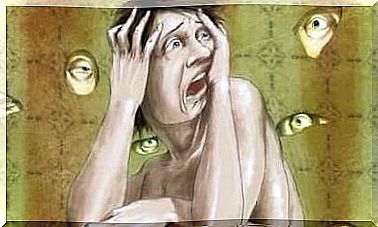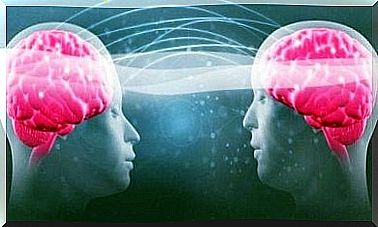Neuropsychological Evaluation: Diagnostic Method

Neuropsychological evaluation or cognitive evaluation is a diagnostic method designed specifically to explore people’s cognitive function. It provides valuable information that may not appear in other types of research. As such, healthcare providers use it as a supplement to neuroimaging or radiology.
Neuropsychological evaluation allows us to study the activity and function of cognitive brain systems by exploring higher levels of abilities. Therefore, healthcare providers use this evaluation in patients with brain injury.
It can help them figure out the extent of the intellectual harm. They also use it for people who want to keep track of their mental function.
Types of neuropsychological evaluation
No two patients are alike. That is why it is so important that the neuropsychological evaluation is flexible. It must be adapted to each clinical case.
Neuropsychological evaluation or cognitive evaluation
The main goal of cognitive evaluation is to analyze a person’s attention span, memory, language, and executive functions. Executive functions include planning, prevention, control, supervision and organization. To do this, psychologists use standardized tests that record quantitative and qualitative information.

The patient’s attitude to the test and the performance of the test are equal to or more important than the results. To evaluate a person with brain damage, their numerical score means something. However, it is just as important for a professional to observe and evaluate the patient as it is they who take the test.
In most cases, information from family members is crucial. This is sometimes because people with mental health problems are not aware that their intellectual capacity is different. So information from close relatives and friends is crucial for an accurate assessment.
Executive function and social cognition
This type of neuropsychological evaluation is very common for children. It consists of a series of neuropsychological tasks that measure the level of maturity and cognitive performance. These tests look at inhibition control as well as multitasking and social skills. The ultimate goal is adapting interpersonal strategies that children use every single day.
One of the most common tests for Spanish speakers is BANFE (Neuropsychological Battery of the Executive Functions and Frontal Lobes). It evaluates executive functions using the 15 processes.
They are grouped into three specific cerebral areas: Orbitomedial, anterior, prefontal, and dorsolateral. The main advantage of this test is that it gives an overall score and a specific score for each region.
Visual-spatial functions
Visual-spatial features are very useful in our daily lives. They allow us to represent, analyze and manipulate objects with our minds. Without them, for example, it would be impossible to pour water into a glass without overfilling it.
What may seem like a vision problem at first may actually have more to do with brain function. They relate to later stages of information processing. In other words, it is to process basic information, related to areas of attachment in the cerebral cortex.
The most common tool for this type of evaluation is the Poppelreuter test. These tests consist of a series of divr that are superimposed and overlap. The Luria-Nebraska Neuropsychological Battery is also very common.
As you can see, neuropsychological evaluation measures a number of things. Among them are general intellectual abilities, language, personality, temperament, attention span, memory and other high-level skills. Experts analyze some abilities more than others depending on patients’ needs.

A neuropsychological evaluation can be crucial to making a proper diagnosis
Neuropsychological evaluation has many applications and uses. One of them is to identify which areas or intellectual functions have been changed. For example, it helps to identify disorders or memory problems that would be impossible to detect otherwise.
In fact, the neuropsychological battery is often the only professional tool that can lead to an early detection of some pathologies. As such , they are important in diagnosing Alzheimer’s. They can also help identify attention problems associated with diabetes or alcoholism.
They also provide a longer opportunity to distinguish between possible diagnoses with the same clinical profile. In other words , neuropsychological evaluation is the key to differentiating between diseases. It can help determine the cause of the patient’s cognitive changes. For example, whether a stroke or deep depression causes changes or not.
However, it is important not to confuse neuropsychological evaluation with simply taking neuropsychological tests or quizzes. It’s much more than that. Administration of tests and quizzes is only one phase of this type of evaluation.









